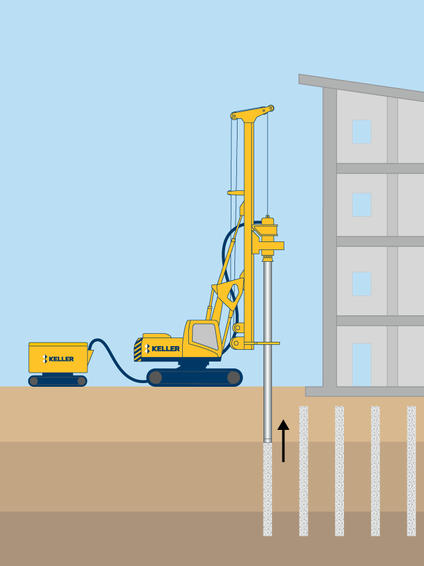Rigid inclusions are a ground improvement method using high deformation modulus columns constructed through compressible soils to reduce settlement and increase bearing capacity.
Ground improvement efficiency depends on the stiffness relationship between the soil and the columns. Load from the structure is distributed to the soil and columns via a load transfer platform or rigid foundation.
Mixed Modulus Columns is the combination of a rigid inclusion for its lower part with a ‘supple’ inclusion in compacted gravel or crushed stone for the upper part and also reduce settlement and increase bearing capacity.

Common uses
Process
After the working platform is prepared, the rig is moved into place and data recording starts. Generally a displacement auger or vibrated tube is used to penetrate down to the designed depth. Concrete is pumped as the tool is pulled upwards. The concrete flows out of the tube and supports the bore. If the concrete is fresh, cutting is done mechanically, if the concrete has hardened, a hand held breaker is often used.
For mixed modulus columns the process is similar however on completing the installation of the concrete rigid inclusion a stone column is constructed over the upper portion of the column, typically the stone column is built by a vibratory displacement method.
Advantages
Quality assurance
Rigid inclusions elements are controlled before, during and after installation to ensure the highest quality of solution. A variety of tests can be carried out including:
- Field trials for verifying columns production parameters
- Digital recording and logging of the execution parameters
- Column integrity test, column load test, column material compressive strength tests, column diameter verification
The type and frequency of tests varies based on the size of the project and the geotechnical context.
